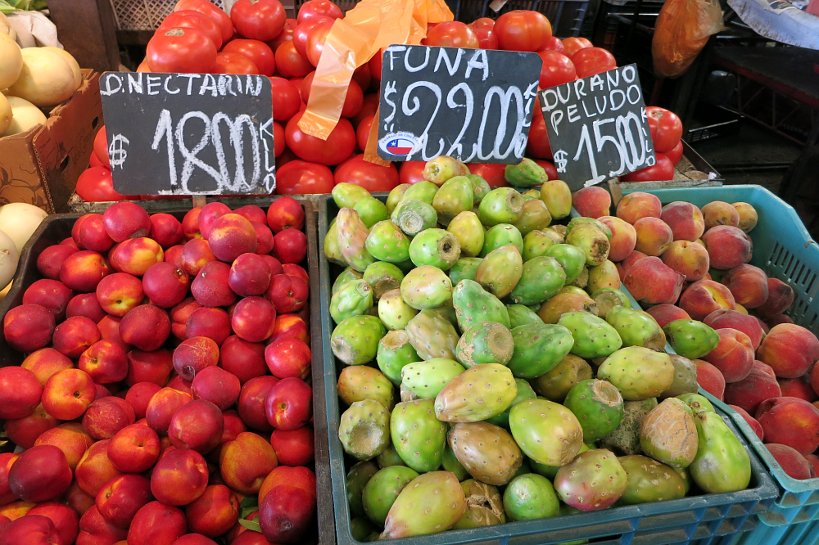The Chilean fruit industry, renowned for its high-quality produce, has encountered significant challenges in recent years. From the emergence of new international competitors to the necessity for advanced technology in production, evolving agronomic practices, and increasingly stringent sustainability and safety standards demanded by consumers, the industry has had to navigate a complex landscape. Furthermore, the impact of climate change and extreme weather phenomena has raised additional concerns, potentially threatening Chile’s leadership in the global fruit market.
In a recent conversation with Blue Magazine, Iván Marambio, president of Frutas de Chile, shared his insights on the current state of the industry and its future projections. Although a comprehensive interview will be published in the next edition of the magazine, key excerpts from this discussion provide valuable context on the challenges and opportunities facing the Chilean fruit sector.
A Shifting Landscape: Competitiveness and Market Dynamics
Recent statistics indicate a gradual decline in Chile’s competitiveness in the global fruit market, particularly concerning blueberries and table grapes. Marambio was asked whether this decline is solely attributable to climatic conditions and unforeseeable events like the pandemic, or if other underlying factors are at play.
“We have observed reductions in the exported volumes of certain species, such as blueberries and table grapes, in recent years,” he explained. “However, other species, like kiwis, have maintained stable volumes, while cherries have shown significant growth. Therefore, we do not believe that the industry is losing competitiveness on an aggregate level.”
Marambio emphasized a noticeable shift in the competitive landscape, particularly due to the entry of new players, such as Peru, into mature markets like the United States. These new competitors have gained advantages through better market access and the utilization of innovative genetic varieties.
Investment in Genetic Improvement
Marambio highlighted the concerted efforts by Chilean producers and exporters of blueberries and table grapes to introduce new genetic varieties into their production matrix. “However, this requires time and is highly dependent on investment,” he noted. “For example, during the 2022-2023 season, nearly 50% of table grape exports consisted of new varieties.”
This commitment to investing in genetic improvements showcases the sector’s resilience and adaptability, even amid challenges. While the industry faces structural pressures in some species—such as drought and market conditions—it also encounters short-term pressures associated with an increase in extreme weather events. These include heat waves, reduced winter precipitation, spring frosts, and concentrated rainfall.
Strategic Objectives: Regaining Competitiveness
Given these challenges, what are the short- and medium-term objectives of Frutas de Chile in terms of recovering competitiveness and re-establishing Chile’s position as a global leader in the fruit industry?
Marambio outlined the primary priorities for Frutas de Chile, emphasizing the need to stimulate industry growth. Key initiatives include:
- Enhancing Fruit Quality through Human Capital: Investing in the training and development of personnel involved in fruit production is essential to ensure that the industry continues to produce high-quality fruits that meet international standards.
- Improving Infrastructure and Logistics: Efficient management of water resources, as well as enhancements in port infrastructure and logistics, are crucial to facilitate smoother operations and reduce wastage during transportation.
- Expanding Market Access: It is imperative to advance into new markets while improving conditions in existing destinations. This can be achieved through deepening free trade agreements, particularly with key partners such as China, India, and South Korea.
Chile’s Global Positioning
Marambio confidently stated, “Chile is currently the main supplier of fresh fruits in the southern hemisphere and the world’s leading exporter of fresh cherries and plums. Although some fruits have lost competitiveness in certain markets due to various factors, we believe we are in a position to recover this competitiveness and consolidate our sector’s image worldwide.”
The Chilean fruit industry has developed a reputation for producing high-quality, safe, and sweet-tasting fruit. Furthermore, the industry is characterized by advanced technology, innovation, and sustainability—traits that resonate with modern consumers’ preferences.
The Role of Technology and Innovation
In an era marked by rapid technological advancements, the role of innovation cannot be overstated. The Chilean fruit sector has increasingly embraced technology, from precision agriculture to sophisticated irrigation systems and data-driven decision-making tools. These innovations not only enhance productivity but also contribute to sustainability efforts, helping to minimize the environmental impact of fruit production.
Marambio emphasized that embracing technology is vital for the industry to thrive amid changing consumer preferences and competitive pressures. “We must continue to invest in innovative practices and technologies to ensure our products meet the highest standards of quality and safety.”
Addressing Sustainability Concerns
Sustainability has emerged as a critical factor influencing consumer choices globally. In response to rising awareness of environmental issues, the Chilean fruit industry has made significant strides in adopting sustainable practices. From responsible water management to organic farming techniques, producers are increasingly prioritizing environmental stewardship.
Marambio noted, “As an industry, we are committed to sustainability. We recognize that consumers today are not only looking for quality but also want to know that the products they purchase are produced sustainably.” This commitment to sustainability not only meets consumer expectations but also strengthens Chile’s position in the global market.
Weathering Climate Change
The increasing frequency of extreme weather events, attributed to climate change, poses a significant threat to the fruit industry. Droughts, heat waves, and unpredictable rainfall patterns can disrupt production cycles and impact fruit quality. Marambio stressed the importance of developing resilience strategies to address these challenges.
“Adaptation is key,” he explained. “We need to invest in research and development to understand how different species respond to changing climatic conditions. This knowledge will guide us in implementing effective strategies to mitigate the impact of climate change on our production.”
Future Outlook: Hope and Resilience
Despite the challenges, Marambio remains optimistic about the future of the Chilean fruit industry. The commitment of producers, exporters, and organizations like Frutas de Chile to overcome obstacles and embrace innovation provides a strong foundation for future growth.
“While we face hurdles, we also have a wealth of experience and expertise within our sector,” he stated. “The adaptability of our producers and the collaborative efforts within the industry will be crucial as we navigate these changes.”
Marambio concluded, “We believe that by focusing on quality, sustainability, and innovation, we can not only recover competitiveness but also reinforce our position as a global leader in the fruit industry.”
The Chilean fruit industry stands at a crossroads, facing both significant challenges and promising opportunities. With the insights from Iván Marambio and the strategic objectives laid out by Frutas de Chile, it is clear that the industry is poised for transformation. By embracing innovation, enhancing sustainability practices, and investing in human capital, the Chilean fruit sector can not only weather current challenges but also emerge stronger on the global stage. As the world continues to evolve, so too must the Chilean fruit industry, ensuring its legacy of excellence and leadership for years to come.



